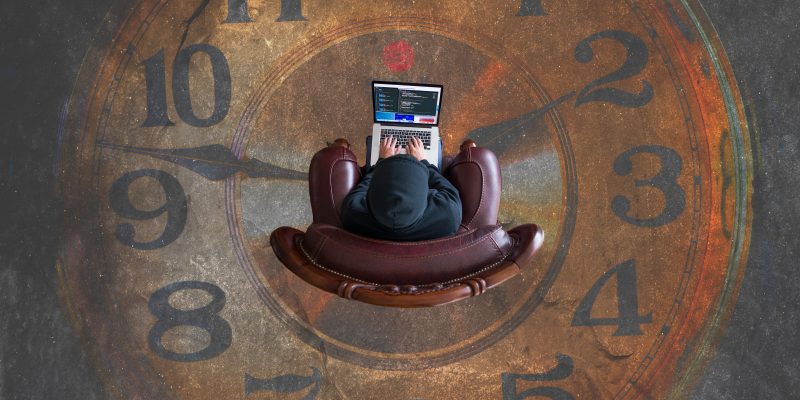Photo by Kevin Ku on Unsplash
According to Laura Vanderkam, time management and productivity author, if you want to be more productive or intentional with your time, you need to know how you are currently spending it. I decided to put this to the test.
In July of 2018, I tracked my time for two weeks. I used a paper log to track 15-minute increments. Since my daughter was visiting her dad and I had a break from parental responsibilities, I knew I would have plenty of time to dedicate to my business.
Indeed my tracking showed a lot of time was spent on my business. However, without a set stopping point to help get my daughter to bed, I found myself doing work some nights right until the moment before I brushed my teeth at night.
In August 2019, I experimented with tracking again. Instead of using a paper tracker, I downloaded the Toggl app. This made it easy to track my time from my phone or laptop. Toggl also shows your time use in a colorful pie chart and sends a weekly report.
Since I am employed by a corporation almost full-time, my goal was to dedicate only 6-10 hours per week to my coaching business. I was surprised to discover that I was actually spending 18 hours per week. However, these were the final two weeks before announcing the September launch of my new coaching program.
At the same time, I was pleasantly surprised to see I was spending even more time with my family. Time with my daughter or my partner individually or together as a family totaled 24 hours per week. Much of the time spent with my daughter was helping her get ready, transporting her to activities or running errands together. However, since we were listening to an audiobook together in the car and discussing the story, the time often felt richer and more enjoyable.
Over the year between tracking periods, I have made several changes to ensure that the way I spend my time aligns with my personal values and goals. For years I have been scheduling just about everything I do on my Google calendar. I already had a recurring Friday Night Date with my partner. But we all agreed that we wanted to have more intentional time as a family. So, we scheduled evenings for playing cards or watching a movie together a few times per week at home. This was in addition to longer activities on the weekends such as bike rides, trips to the lake, outdoor music and festivals. With the exception of occasional networking events, I have also committed to protecting family time by not scheduling work tasks evenings and weekends.
Thanks to Gretchen Rubin’s idea of the 19 for 2019, I created a clearer vision of what I wanted to do on a regular basis to bring greater enjoyment to my life. These included activities like eating at a new restaurant each month and visiting a novel museum or theater venue each quarter. I set a goal to meet with friends monthly and found that I was actually meeting with friends much more often than I realized.
In the last few weeks, I’ve found that reading to my daughter as she gets ready for bed is a ritual she looks forward to. My daughter is 12 years old, and it had been several years since I stopped reading to her nightly. She chose a young adult novel. I was curious about the book and thought it would be fun to read together. After a few nights, she was asking me to read to her without prompting and it felt like a good way to slow down and connect before bed.
Another major shift was deciding to carve out a longer period of time to unwind at night. There is so much research that demonstrates the negative impact on sleep caused by the blue light from our computers and phones. Light from these devices suppresses melatonin for longer periods of time than natural light so we don’t feel as sleepy as we should. My bedtime has been consistently around 10:30 pm for several years. However, I’m now aiming to get to bed earlier to dedicate 15 minutes to reading a paperback book. As much as I love self-improvement books, I decided that my bedtime reading had to be purely for pleasure. Reading this book only in bed has created some anticipation for my bedtime. Since the evening wind-down has lately begun with reading to my daughter, I have created an even longer buffer of time between ending my work tasks, disconnecting from devices and going to sleep.
Laura Vanderkamp emphasizes that we are allotted 168 hours each week and it’s up to us to choose how we spend them. Even after 56 hours of sleep and 50 hours of work, there are still 62 hours where we can be intentional with our time. It’ not surprising that when I track my time I am more productive. Tracking helps me stay focused on a single task and make better choices, just like when I track my foods I eat better. Just as importantly, I discovered that by making some small changes I am dedicating my hours, days and weeks to the people and activities that matter most.

